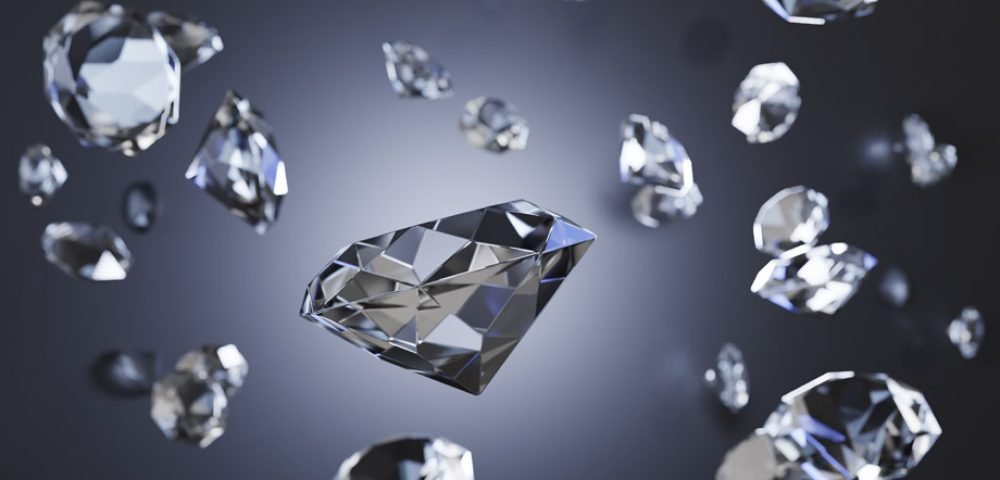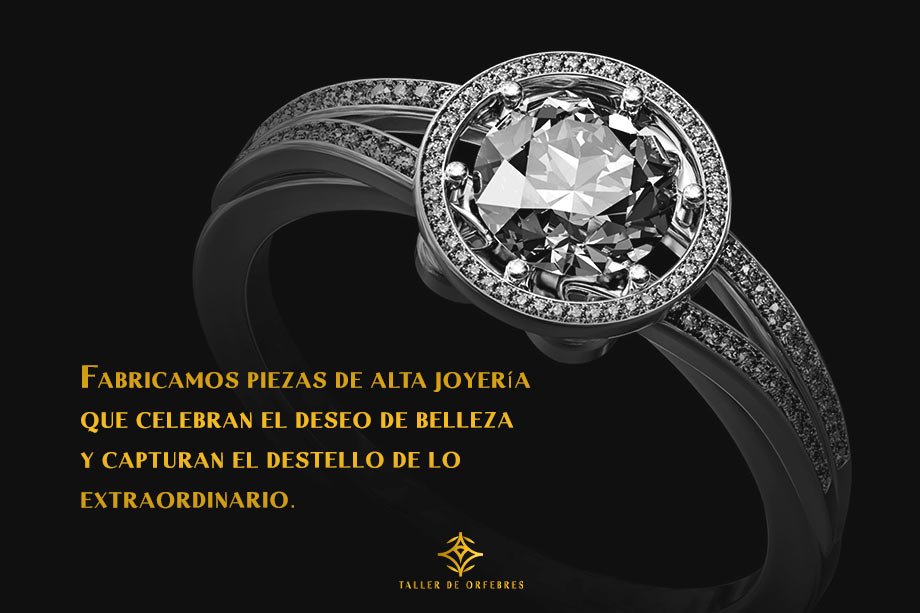In the world of jewellery, diamonds have for centuries been the ultimate symbol of luxury and elegance. However, growing concern about the environmental and social impact of mining has prompted the search for more sustainable alternatives. It is in this context that the synthetic diamondsalso called artificial diamondshave gained prominence as an ethical and responsible choice.
These diamonds, created in a laboratory using high-tech processes, replicate the formation conditions of natural diamonds. Visually and structurally, they are virtually indistinguishable from diamonds mined from the earth, but with the advantage of having a lower environmental impact and be more accessible.
The synthetic diamond jewellery have begun to take hold in fine jewellery, redefining the concept of luxury and sustainability. By eliminating the extractive practices associated with traditional diamonds, these stones represent the future of an industry that is more conscious and aligned with the values of new generations.
History of synthetic diamonds
Origin and early development
The history of the synthetic diamonds dates back to the 18th century, when scientists began investigating the possibility of recreating these stones in the laboratory. In 1772, French chemist Antoine Lavoisier discovered that diamonds were composed of pure carbon, laying the groundwork for the manufacture of artificial versions.
However, the first major breakthrough did not come until 1954, when a team of scientists at General Electric succeeded in synthesising the first diamonds using the method of High Pressure High Temperature (HPHT). This process recreates the extreme conditions under which natural diamonds form in the earth's mantle. Although these early specimens were not of gemmological quality, they marked a milestone in the diamond industry. artificial diamonds.
Developments and current technologies
Since the 1950s, the technology has evolved significantly. In addition to the HPHT method, the technique of Chemical Vapour Deposition (CVD)which allows diamonds to be manufactured with greater control over their quality and characteristics. In this process, carbon atoms are deposited in layers on a substrate, forming the diamond's crystalline structure.
Today, innovations continue to improve the production of synthetic diamonds. Advanced techniques have been developed, such as the use of liquid metal to catalyse the growth of diamonds at low pressures and temperatures. These improvements have lowered production costs, making the synthetic diamond jewellery are becoming more and more accessible to the market.
The development of the artificial diamonds has not only changed the jewellery industry, but has also influenced other sectors, such as technology and material science. Their growth is unstoppable, and more and more consumers see them as a legitimate and desirable alternative to natural diamonds.
Processes for the creation of synthetic diamonds
The manufacture of synthetic diamonds is based on two main methods that replicate the natural conditions under which these gems are formed:
High Pressure High Temperature (HPHT)
This method emulates the extreme conditions of the Earth's mantle. A diamond 'seed' is placed in a press that applies pressures of approximately 5-6 GPa and temperatures approaching 1,500 degrees Celsius. In this environment, carbon dissolves and crystallises around the seed, forming a diamond. This process can take anywhere from several weeks to a few months, depending on the desired size of the diamond.
Chemical Vapour Deposition (CVD)
In this process, a mixture of carbon-rich gases, such as methane, is introduced into a vacuum chamber. Through the application of energy, such as microwaves or lasers, the gases are ionised, breaking down the carbon molecules. These atoms are deposited on a substrate surface, usually a diamond seed, and build up layer by layer to form a new diamond crystal. The CVD method allows more precise control over the characteristics of the diamond, including its purity and size.
Comparison between natural and synthetic diamonds
Physical and chemical properties
Both the synthetic diamonds like natural ones are composed of pure carbon and share the same cubic crystalline structure, which gives them their legendary hardness and lustre.
From a chemical and physical point of view, the artificial diamonds are virtually identical to those extracted from the earth. Both have a hardness of 10 on the Mohs scale, making them the hardest material known. Thanks to this characteristic, the synthetic diamond jewellery offer the same durability and strength as those made from natural diamonds.
Durability and quality
The synthetic diamonds have achieved exceptional quality thanks to technological advances in their production. They often have fewer impurities and inclusions than natural diamonds, which enhances their clarity and brilliance. In addition, because they are lab-created, their colour and size can be better controlled, making them ideal for custom jewellery making.
Cost and accessibility
One of the main differences between natural and synthetic diamonds is their price. The artificial diamonds can cost between 30 % and 50 % less than their natural counterparts, as they do not require costly extraction processes or intermediaries in the supply chain.
This factor has boosted the popularity of the synthetic diamond jewelleryThe diamond is a very expensive diamond, allowing more consumers to have access to sophisticated pieces without the high cost of natural diamonds.
Sustainability and ethics
The environmental impact of natural diamonds is significant, as their extraction involves the disruption of ecosystems, water pollution and the generation of mining waste. In addition, mining has historically been linked to ethical issues, such as labour exploitation and the financing of armed conflict.
In contrast, the synthetic diamonds are produced in controlled environments, without the negative effects of mining. Their manufacture consumes fewer natural resources and eliminates the risks associated with so-called "blood diamonds".
Opt for synthetic diamond jewellery is a decision aligned with the values of sustainability and social responsibility. Modern consumers are looking for products that are not only aesthetically appealing, but also reflect a commitment to the well-being of the planet and the communities involved in their production.
Market and trends
Growth of the synthetic diamond market
The market for synthetic diamonds has grown exponentially in recent years. Thanks to technological advances and increased awareness of sustainability, more and more consumers prefer this alternative to natural diamonds. Leading companies in the jewellery industry, such as Pandora y Swarovskihave opted for the synthetic diamond jewelleryThe company has consolidated its legitimacy in the luxury sector.
Declining production costs and rising demand have contributed to the fact that the artificial diamonds are becoming more and more accessible. It is expected that in the coming years its market will continue to expand, redefining the concept of exclusivity in fine jewellery.
Consumer preferences
Modern shoppers, especially millennials and members of Generation Z, are looking for products aligned with their values of sustainability and ethics. For them, beauty and luxury go hand in hand with environmental and social impact. This shift in mindset has driven the popularity of the synthetic diamondsconsidered a responsible choice without sacrificing quality or aesthetics.
In addition, the more affordable price of the artificial diamonds allows consumers to purchase larger or higher quality pieces for a lower cost. This combination of ethics, accessibility, and sophistication has made the synthetic diamond jewellery in a growing trend.
Innovation and design
Advances in the manufacture of synthetic diamonds have opened the way for the new possibilities for jewellery design. Today, gemmologists can create custom diamonds in terms of colour, size and shape, offering designers unprecedented creative freedom.
One of the most outstanding innovations is the ability to produce coloured diamonds, something extremely rare and expensive in its natural form. Thanks to these innovations, consumers have access to unique pieces that were previously only available to an exclusive market.
Future trends
As production technology continues to evolve, synthetic diamonds are expected to gain further prominence. The implementation of artificial intelligence and advanced crystalline growth techniques will optimise the manufacturing processesThe Commission's proposal for a increasing quality.
In addition, transparency in the certification and traceability of the artificial diamonds will become an industry standard, giving consumers greater confidence.
The market for synthetic diamond jewellery is not only booming, but it is redefining the future of fine jewellery. With a focus on sustainability and innovation, this trend is shaping up to be the dominant option in the coming years.
Final considerations
As we move towards a more conscious and responsible future, synthetic diamonds are emerging as a viable alternative to natural diamonds. Their growing popularity reflects a shift in priorities for both consumers and manufacturers, who are looking to reduce environmental impact without compromising quality and luxury.
In addition, the process of creating a diamond in a laboratory eliminates mining practices, which have historically raised ethical and environmental concerns. Understanding the process of a diamond from extraction to completion The advantages of the artificial diamondswhich offer transparency and traceability at source.
At Taller de Orfebres We will continue to explore and expand our use of synthetic diamond jewellery. We are committed to providing fine jewellery that not only stand out for their beauty and sophistication, but that also resonate with principles of conscious and responsible living.
Synthetic diamonds, with their perfect union of science and artare redefining the jewellery industry. They show that luxury and ethics can go hand in hand, setting a new standard for the future of fine jewellery.
References
-
Madestones. Production of synthetic diamonds.
-
Shannon Abrasives. Unveiling the magic: How synthetic diamonds are crafted.
-
Novita Diamonds. Laboratory diamonds vs. natural diamonds.
-
National Geographic (2024, March). Are synthetic diamonds really better for the planet?
-
Vision Engineering (2024, February). Synthetic diamond manufacturing process.
-
77 Diamonds. How are diamonds formed?
-
Google Patents. Process for obtaining synthetic diamonds.




